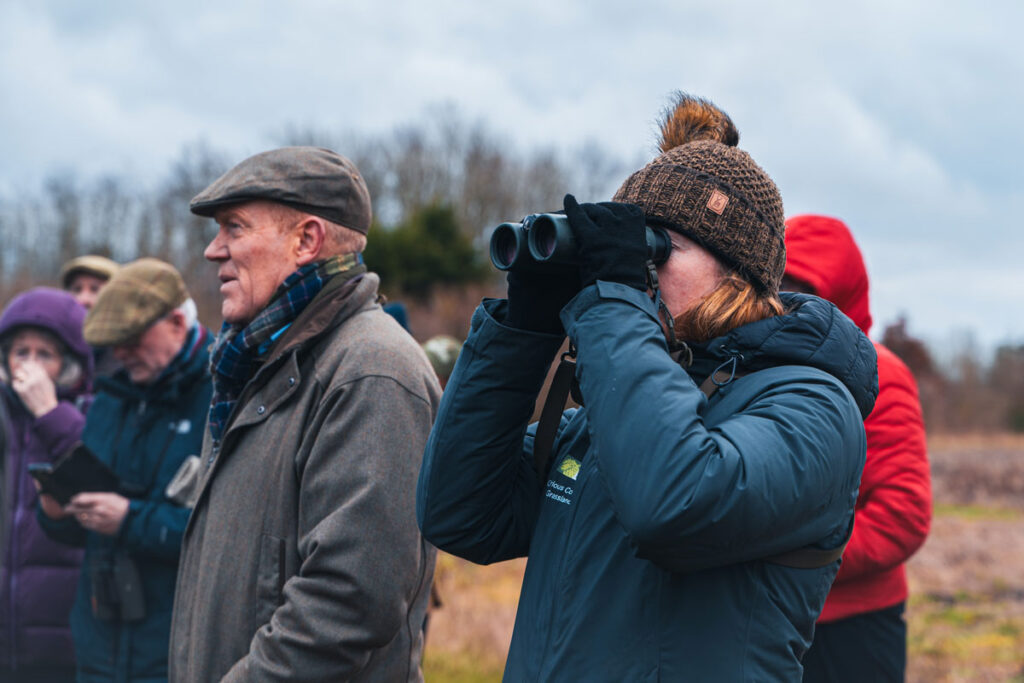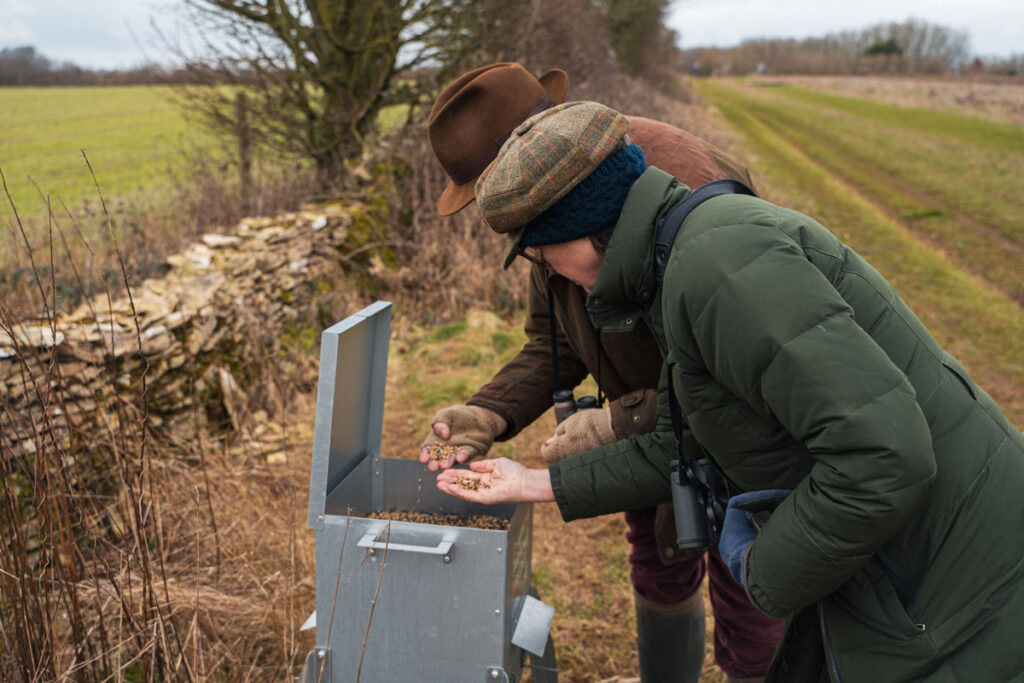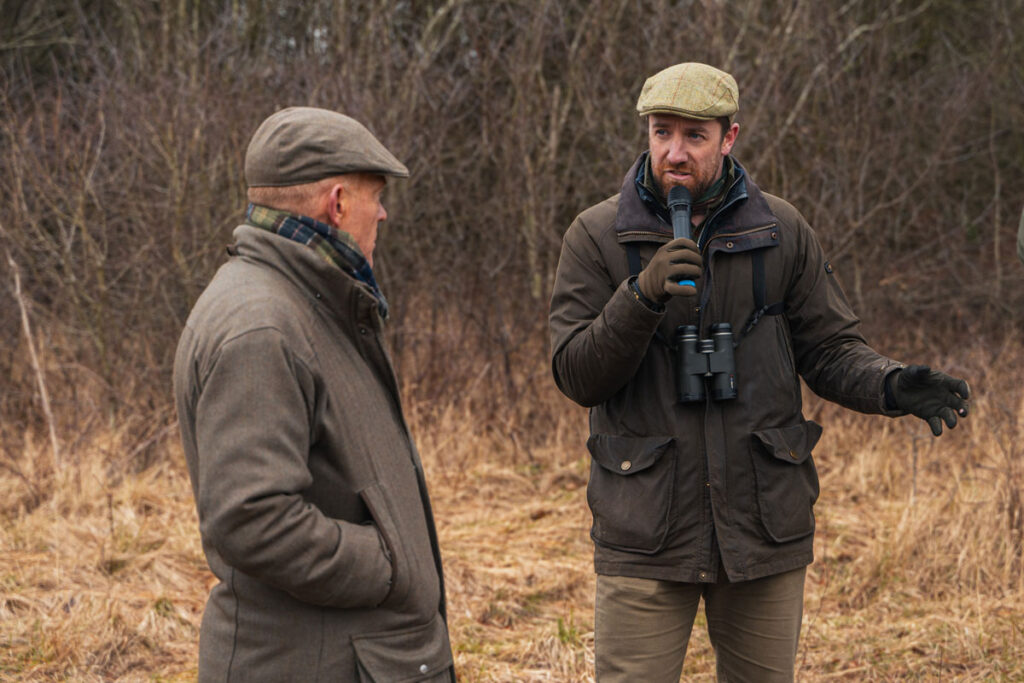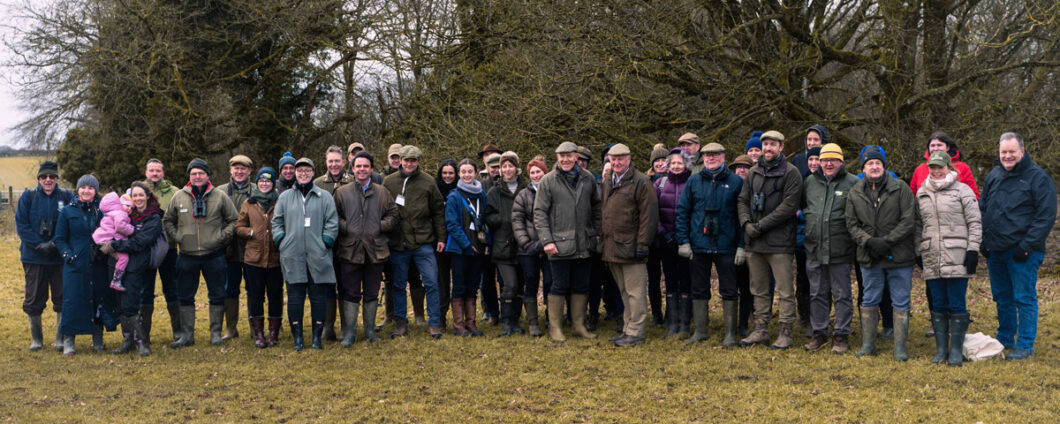The Big Farmland Bird Count (BFBC) – the UK’s annual census of farmland birds – was launched by farmer and TV personality Adam Henson on his Cotswold Farm at the weekend.
Run by the Game & Wildlife Conservation Trust (GWCT) and sponsored by the National Farmers’ Union (NFU), the BFBC will be on for two weeks until Sunday 23 February.
Adam hosted 45 guests including local farmers and representatives from the National Trust, RSPB, Natural England, NFU, local students and others who braved the freezing conditions at his Cotswold Farm Park in Gloucestershire for a guided walk across the fields. They were shown what measures he has in place to help provide food and cover for farmland birds, and how he is working towards increasing overall biodiversity across his land.
Welcoming guests as they arrived, Adam told them about his life growing up on the farm and how ways have changed since then with how the land is managed.
“After the Second World War it was all about producing food for the nation and my dad and the farmers in his era got paid to rip out hedges and dry stone walls and permanent pasture and fire meadows – and I’ve been paid to put them all back again,” he said.
“At agricultural college I got taught how to milk cows and shear sheep, I didn’t get taught how to look after the environment.
“But we’ve been learning a lot over the last 20 years. I love living and working where I do, and it’s a great joy to see wildlife on the farm.
“We need to learn how to manage all the areas of the farm correctly so they actually to deliver conservation and wildlife and quality food production side by side.
“The good news is that the current agri-environment options are more practical and better funded, but it’s critical that the government continues to properly fund these schemes if we want to see our farmland birds recover.”
Lapwing, golden plovers and fieldfares
During the walk around the farm, experts from the GWCT, RSPB, Cotswold National Landscape and Adam himself covered a range of topics from supplementary feeding and what crops to grow to help bird through the ‘hungry gap’ in late winter/early spring, to the rare and abundant flora and fauna that can be found in his SSSI field – Adam’s favourite part of the farm.

A big flock of lapwing were spotted on the walk, as were flocks of golden plovers, fieldfares and starlings, and long list of other birds, expertly pointed out to the group by the RSPB’s Mark Nowers.
Farmland birds have declined by 63% in the past 50 years. The key to reversing the trend is held by the people who look after 72% of the UK which is agricultural land. The BFBC encourages farmers, land and wildlife managers to spend 30 minutes recording the bird species and numbers on their farms and surrounding land during a two-week window in winter.
In its 12th year, the Count provides a snapshot of the bird population on UK farmland to help us understand which species are in the most serious trouble and how we can help them. It also aims to raise awareness of the vital role our ‘working conservationists’, such as farmers and other land managers play in helping farmland birds.
Adam, who farms 1,600 acres alongside running in the rare breeds visitors farm, is taking part in the Big Farmland Bird Count for the first time, having reported on it on Countryfile last year. He says he hopes more farmers and land managers up and down the country will follow suit and do the count.
He said: “It’s very easy to take part you just make a note of the birds you see or hear and upload it to the BFBC website. If, like me, you struggle to recognise them all, you can always ask a bird watcher friend to come out with you. It’s a really enjoyable thing to do.”

Adam recently installed some additional supplementary feeders on the farm, after the GWCT helped and advised him on the best location for them. He says since they went up in December, birds have been flocking to them.
“You can’t manage what you can’t measure”
Guests could see for themselves how the feeders were being used by a lots of little birds, including finches and buntings. One feeder even had fresh grey partridge droppings by it, and Adam confirmed there were two pairs on his land of this species, which has seen a dramatic 94% decline since the 1980s.
GWCT’s researcher Lizzie Grayshon spoke about barn owls, where to best site boxes for them, and also talked about how you can help red-listed lapwing thrive on your land.

Matt Goodall, the GWCT’s Head of Education, highlighted the importance of encouraging farmers to take part and helping them feel connected to the nature they have on their farms.
He said: “Farmers are key to achieving nature recovery. This cannot be done if we just concentrate on nature reserves alone, which make up less than 12% of land in the UK.
“So, it’s really important to keep enthusing and encouraging farmers, and all land and wildlife managers out there, along this journey.
“Hearing Adam talk about what he’s got on his farm has been absolutely fantastic because that’s one of the incentives to get people involved in the Big Farmland Bird Count.
“To see what is out there, and what’s struggling at this time of year, really helps build a desire to make a difference and invest in measures that improve the habitat for birds and other wildlife and help them through the winter months.
“You can’t manage what you can’t measure, so doing the survey year on year helps you understand what you have on the farm, which gives you a better idea of how to make improvements.”
Other speakers on the walk included Dr Roger Draycott, GWCT Director of Advisory, and Suffolk farmer Patrick Barker, who has been taking part in the count since the start in 2014. They spoke to Adam about his cover crops and hedgerows and what makes a good field margin beneficial to birds.
The launch on Friday finished with lunch in front of a warming log fire and a chance for guests to talk to Adam and the other experts.
Signing up for the GWCT Big Farmland Bird Count is free and no specialist knowledge or equipment are required. In many places, local bird and wildlife groups are working with land managers to help them do the count.

